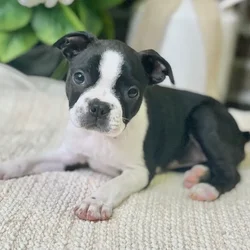Shetland Sheepdog

The Shetland Sheepdog, also known as the Sheltie, is an extremely intelligent, quick, and obedient herder from Scotland’s remote and rugged Shetland Islands. Shelties bear a strong family resemblance to their bigger cousin, the Collie.



Want to know more about Shetland Sheepdog ?
Breed Traits
About
The Shetland Sheepdog is a small, active, and agile herding dog standing between 13 and 16 inches at the shoulder. The long coat is harsh and straight, with a dense undercoat, and comes in black, blue merle, and sable, with white markings. The coat, along with a long, wedge-shaped head; small, three-quarter erect ears; and deep-chested, level-backed torso, give Shelties the look of a rough-coated Collie in miniature. Bright and eager Shelties are easy trainers and world-class competitors in obedience, agility, and herding trials. They are sensitive and affectionate family dogs, highly in tune with the mood of the household. They like to bark and tend to be reserved toward strangers—two qualifications of an excellent watchdog.
History
Standard
Nutrition
Grooming
Exercise
Training
Health
Clubs, Registries & Associations
American Canine Association Continental Kennel Club Universal Kennel Club International American Kennel Club United All Breed Registry America's Pet Registry, Inc. United Kennel Club (Based on breed recognition. See store for details on this particular puppy.)
Group
Heritage
Description
Health Awareness
Personality
Additional Information
General Appearance
Preamble-- The Shetland Sheepdog, like the Collie, traces to the Border Collie of Scotland, which, transported to the Shetland Islands and crossed with small, intelligent, longhaired breeds, was reduced to miniature proportions. Subsequently crosses were made from time to time with Collies. This breed now bears the same relationship in size and general appearance to the Rough Collie as the Shetland Pony does to some of the larger breeds of horses. Although the resemblance between the Shetland Sheepdog and the Rough Collie is marked, there are differences which may be noted. The Shetland Sheepdog is a small, alert, rough-coated, longhaired working dog. He must be sound, agile and sturdy. The outline should be so symmetrical that no part appears out of proportion to the whole. Dogs should appear masculine; bitches feminine.
Size, Proportion, Substance
Head
Neck, Topline, Body
Forequarters
Hindquarters
Coat
Gait
Temperament
All pets have found there homes! Sign up to be notified when new pets are added so you don't miss out.













